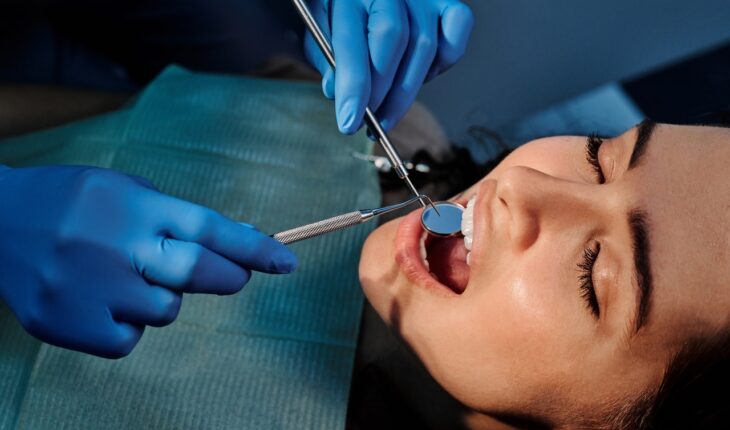Picture this: You’re in your late teens or early twenties, and suddenly, you start experiencing pain in the back corners of your mouth. What could it be? If you guessed wisdom teeth, you’re right! These pesky molars can cause a variety of oral health issues, which is why their removal is often necessary for a pain-free future. In this comprehensive guide, we’ll explore the importance of wisdom teeth removal and cover everything you need to know about the process, including potential complications, at-home care, and some alternatives. So, let’s dive in!
Development of Wisdom Teeth
Age of emergence: Late teens and early twenties
Wisdom teeth, also known as third molars, usually emerge between the ages of 17 and 25. They’re called “wisdom teeth” because they appear when people reach adulthood and are thought to be more “wise” than during their adolescence.
Evolution and modern human jaws: The differing sizes and room for third molars
Interestingly, not everyone has wisdom teeth. Some people are born without them. This is because, over time, our human jaws have evolved to be smaller, often leaving less space for these third molars to grow. When there isn’t enough space for the wisdom teeth to erupt properly, complications can arise.
The eruption process and its potential complications
The process of wisdom teeth erupting can be problematic for several reasons. They can get stuck or “impacted” beneath the gums, causing pain, swelling, and infection. They can also cause dental crowding or damage adjacent teeth, resulting in the need for orthodontic treatment, like Invisalign. An example is an Invisalign Oakville clinic that offers corrective measures for dental crowding caused by wisdom teeth.
Potential Problems with Wisdom Teeth
Impacted wisdom teeth: Types and risks
Impacted wisdom teeth can be classified as fully or partially impacted, depending on whether they are completely or partially covered by gum tissue. Both types can cause problems like infection, pain, and dental crowding.
Pericoronitis: Inflammation and infection around a partially erupted wisdom tooth
When a partially impacted wisdom tooth tries to emerge, the gum tissue around it can become inflamed and infected. This condition, known as pericoronitis, can cause pain, swelling, difficulty chewing, and even a foul taste in the mouth. If not treated promptly, it can become a severe infection requiring surgical intervention.
Dental crowding: Wisdom teeth causing pressure and shifting of other teeth
Wisdom teeth can cause dental crowding, which in turn can lead to misalignment issues necessitating orthodontics. A family dentist can help you identify and deal with dental crowding. For example, a family dentist Sydney clinic might recommend braces or Invisalign to correct the misalignment caused by wisdom teeth.
Gum disease (periodontitis) and wisdom teeth
Wisdom teeth can contribute to the development of gum disease if not properly cleaned. Partially erupted wisdom teeth make it difficult to maintain proper oral hygiene in those areas, increasing the risk of gum disease.
Tooth decay (cavities) resulting from partially erupted or impacted wisdom teeth
Similar to gum disease, wisdom teeth can also be hard to clean, leading to an increased risk of tooth decay.
Cysts and tumors associated with wisdom teeth
Impacted wisdom teeth can sometimes develop cysts or tumors in the jawbone, causing damage to the surrounding teeth and bone structure.
Recognizing the Need for Wisdom Teeth Removal
Pain
One of the most common signs that it’s time to remove your wisdom teeth is pain. This could be due to the tooth trying to erupt through the gum line, pressure on other teeth, or infection.
Swelling
Swelling in the gums or jaw can indicate the presence of an impacted wisdom tooth or an infection.
Infection
An infection in the area around a wisdom tooth can result in pain, swelling, and other symptoms, such as redness, pus, or a foul taste in the mouth.
Imaging: Dental X-rays and CT scans revealing impacted, potentially problematic wisdom teeth
Your dentist may use dental X-rays or CT scans to identify impacted wisdom teeth that could cause problems.
The Wisdom Teeth Removal Process
Your consultation: Meeting with an oral surgeon or dentist
The wisdom teeth removal process begins with a consultation with your dentist or oral surgeon, who will evaluate your oral health and discuss the extraction procedure.
Preparing for surgery: Fasting and arranging for transportation
Before the surgery, you’ll need to follow specific instructions, such as fasting for several hours and arranging for transportation to and from the appointment, as you may be sedated for the procedure.
The procedure: Local anesthesia, sedation, and extraction techniques
During the extraction, your dentist or oral surgeon will administer local anesthesia and possibly sedation, depending on your needs. They will then make a small incision in the gum, remove the wisdom tooth, and stitch the area closed.
Post-operative care: Pain management, healing, and recommended downtime
After the surgery, your dentist or oral surgeon will provide you with instructions for pain management and care, such as using ice packs, taking prescribed medications, and avoiding certain foods and activities.
Preventive Wisdom Teeth Removal
Benefits of early extraction
Preventive removal of wisdom teeth can help avoid potential complications down the line. Removing wisdom teeth early, before problems arise, makes the procedure generally easier and less risky.
Age-related factors and healing
Patients who undergo wisdom teeth removal at a younger age often experience faster healing times and fewer complications.
Reducing the risk of dental complications
Preventive wisdom teeth removal can help reduce the risk of dental issues, such as crowding, tooth decay, gum disease, and more serious complications like cysts or tumors.
Potential Risks and Complications of Wisdom Teeth Removal
Dry socket: Causes, prevention, and treatment
Dry socket is a painful condition that can occur after wisdom tooth extraction when a blood clot fails to form or becomes dislodged from the extraction site. This can be prevented by following your dentist’s post-operative instructions carefully.
Paresthesia: Nerve damage and potential loss of sensation
In some cases, wisdom tooth removal can result in nerve damage leading to temporary or permanent loss of sensation in the lips, tongue, or cheek. This risk is generally low but should be discussed with your dental professional.
Infection and bleeding: Risk factors and management
Infection or excessive bleeding may occur as a complication of wisdom teeth removal. However, these risks can be managed and minimized by following post-operative instructions and promptly reporting any issues to your dentist.
Alternatives to Wisdom Teeth Removal
Monitoring and maintaining dental health
If your wisdom teeth are not causing any problems, your dentist may recommend monitoring them and maintaining good oral hygiene to prevent potential issues.
Partial removal or crown reduction
In some cases, only the crown of the wisdom tooth may need to be removed or reduced in size, leaving the root intact. This can be an alternative to full extraction for certain patients.
Orthodontic solutions for dental crowding
If dental crowding is the primary concern, orthodontic treatments may be an alternative to wisdom teeth removal. Consultation with a dental professional is vital to determine the best course of action. One such alternative treatment can be sedation dentistry, a technique that eases dental anxiety and fear. For instance, sedation dentistry Calgary clinics provide various sedation options to make the dental treatment process more comfortable.
Conclusion
In summary, wisdom teeth removal is crucial for a pain-free future and overall oral health. It’s essential to weigh the potential risks and benefits and consult with your dental professional to determine the best course of action. By staying informed and proactive about your dental health, you can ensure a lifetime of happy, healthy smiles. Keep smiling!






